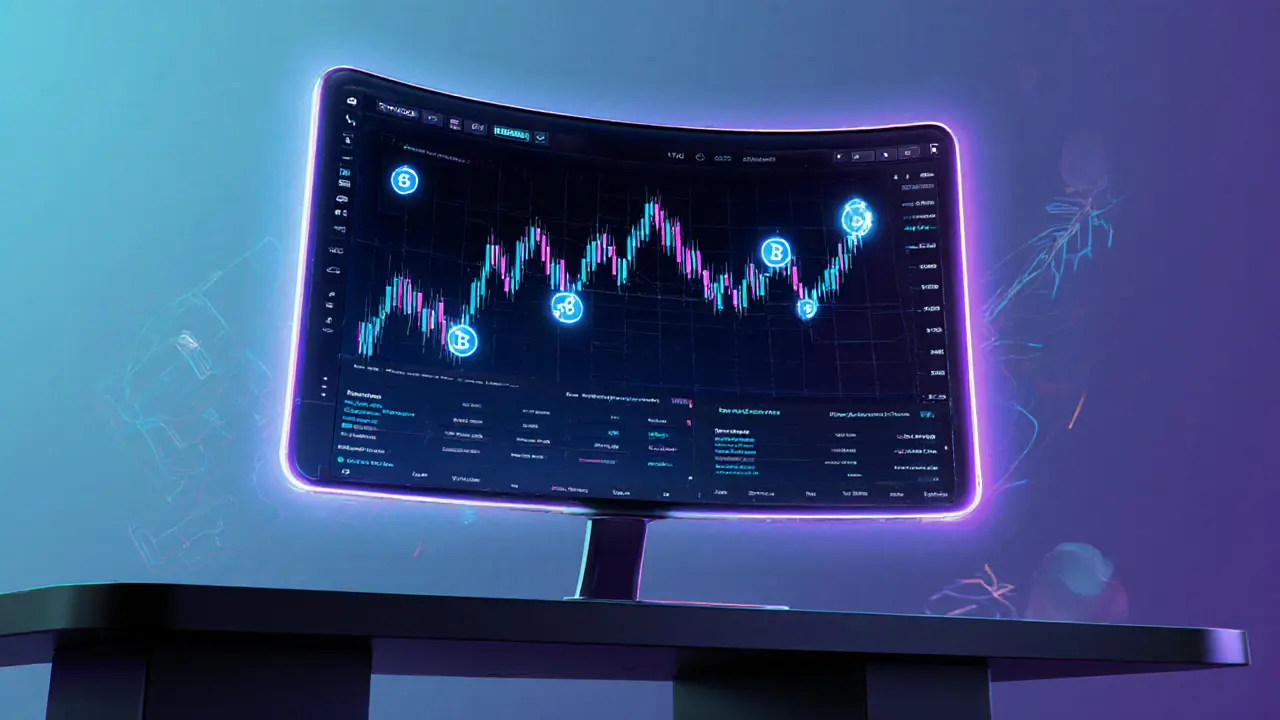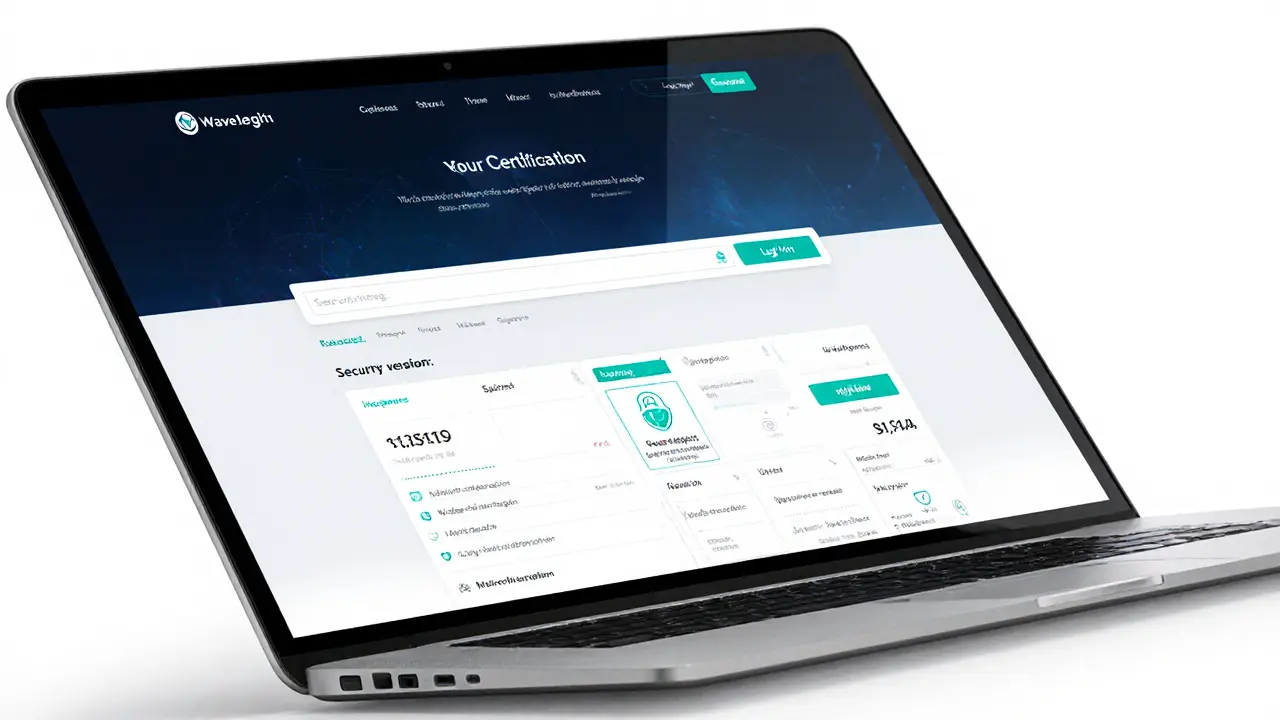C-Trade Crypto Exchange Review - Fees, Features & Who Should Use It

C-Trade Fee Calculator
Maker Rebate
$0.00
C-Trade AdvantageTaker Cost
$0.00
Higher RateWithdrawal Fee
$0.00
Network OnlyHow This Works
This calculator estimates your potential costs and savings on C-Trade based on:
- Maker Rebate: C-Trade gives you a -0.025% rebate on every maker order
- Taker Cost: You pay 0.075% per taker order (higher than industry average)
- Withdrawal Fee: Only network fees apply (no extra charges)
If you’ve been hunting for a crypto exchange that actually pays you to add liquidity, you’ve probably stumbled upon C-Trade crypto exchange review articles. Below you’ll get a straight‑forward look at what C-Trade offers, how its fees stack up, and whether the platform fits your trading style.
Quick Take
- Maker fee: -0.025% (you get a rebate for adding orders).
- Taker fee: 0.075% (slightly above the industry average).
- Withdrawals: Only the blockchain network fee, no extra charge.
- Best for algorithmic traders, market makers, and high‑frequency users.
- Retail takers may pay more than on bigger exchanges like Binance.
What Is C-Trade?
C-Trade is a cryptocurrency exchange that markets itself as a low‑cost venue for professional traders, featuring a negative maker fee and a network‑only withdrawal policy. The platform is relatively new, and public information focuses mostly on its fee schedule rather than on its founding date, regulatory standing, or user base size.
Fee Structure Explained
Two key fee concepts dominate any exchange review: the maker fee the charge (or rebate) applied when you add liquidity to the order book and the taker fee the cost you pay when you remove liquidity by matching an existing order. C-Trade flips the maker model on its head:
- Maker rebate: -0.025% per order. A trader buying $1,000 worth of BTC would actually pay $997.50 and receive a $2.50 rebate.
- Taker fee: 0.075% per order. This is about 27% higher than the global average taker fee of 0.0591%.
The negative maker fee is designed to attract liquidity providers, tightening spreads and improving order‑book depth. For high‑frequency or algorithmic strategies that post many maker orders, the rebate can quickly offset the higher taker cost.
Withdrawal Policy - Network‑Only Fees
Most exchanges tack on a flat withdrawal charge on top of the blockchain’s own fee. C-Trade, however, follows a withdrawal fee policy that only passes the actual network fee to the user, without any extra markup. Compared with the industry benchmark of 0.00053BTC per Bitcoin withdrawal, C-Trade’s fees usually sit below that figure because they simply reflect the fluctuating network cost at the moment of the transaction.
This approach is especially friendly for traders who move funds frequently, as it prevents the “low‑fee‑trading, high‑exit‑cost” trap that many platforms employ.

Who Benefits Most?
The fee model creates a clear winner‑takes‑all scenario:
- Market makers & algorithmic traders: The rebate incentivizes posting limit orders, which can generate a steady income stream on high‑volume pairs.
- Institutional liquidity providers: Large orders that sit on the book for extended periods earn rebates, lowering overall execution costs.
- Retail takers: If you mainly snap up existing orders, you’ll pay the higher taker rate, making platforms with zero‑fee taker models (e.g., Binance) more cost‑effective.
Fee Comparison with Industry Averages
| Fee Type | C-Trade | Industry Avg. | Binance (2025) |
|---|---|---|---|
| Maker | -0.025% | +0.0215% | 0.00% |
| Taker | 0.075% | 0.0591% | 0.04% |
| Withdrawal (BTC) | Network‑only | ~0.00053BTC | Network‑only + 0.0001BTC |
The table shows that C-Trade’s maker advantage is unique, while its taker rate sits above both the industry norm and Binance’s aggressive pricing. Withdrawal costs remain competitive across the board.
Limitations & Risks
Even with a compelling fee model, a few red flags deserve attention:
- Limited public data: There’s little information on regulatory licensing, security audits, or insurance funds, making due‑diligence harder.
- Liquidity depth: Without clear volume metrics, it’s unclear whether the order book can handle large orders without slippage.
- Geographic availability: The platform appears region‑specific, and users in major markets may face access restrictions.
- Community feedback: Sparse user reviews suggest a smaller or less engaged user base compared to giants like Coinbase or Kraken.
These factors matter especially for traders moving sizable positions or seeking robust legal protections.
Bottom Line - Should You Sign Up?
If you run a high‑frequency strategy, provide liquidity on a regular basis, or simply enjoy the idea of earning a rebate on every maker order, C-Trade’s fee model is hard to ignore. For casual investors who mainly execute market orders, the higher taker charge and uncertain liquidity may outweigh the benefits.
Given the limited transparency around security and regulatory compliance, it’s wise to start with a modest allocation, test the order‑book depth on your preferred pairs, and keep an eye on any emerging community discussions.
Frequently Asked Questions
What does a negative maker fee actually mean?
A negative maker fee is a rebate. Instead of paying a fee for adding liquidity, the exchange credits you a small percentage of the trade value. On C‑Trade, the rebate is -0.025%, so a $1,000 maker order nets you $2.50 back.
Are there any hidden fees for withdrawals?
C‑Trade only passes the blockchain’s network fee to the user. There’s no extra markup, unlike many competitors that add a flat fee on top of the network cost.
How does C‑Trade’s taker fee compare to Binance?
C‑Trade charges 0.075% per taker order, while Binance’s taker fee sits around 0.04% for most users. So takers pay roughly double on C‑Trade.
Is C‑Trade regulated in any jurisdiction?
Public information does not detail a specific licensing regime. Prospective users should verify the exchange’s compliance status in their country before depositing large sums.
Can I use C‑Trade on a mobile device?
The platform offers a web‑based interface that is responsive on smartphones. A native mobile app has not been announced as of October2025.



Raphael Tomasetti
December 20, 2024 AT 08:15C‑Trade’s -0.025% maker rebate effectively turns liquidity provision into a micro‑arbitrage engine for high‑frequency bots.
Jenny Simpson
December 23, 2024 AT 05:42Imagine a world where every limit order you place pays you back, where the exchange actually rewards you for adding depth to the market. C‑Trade pitches this dream with a negative maker fee, a concept that sounds like a utopia for market makers. Yet the taker fee sits at 0.075%, a figure that looms larger than the industry baseline and gnaws at the margins of casual traders. The withdrawal policy, stripped down to pure network fees, sounds generous, but the lack of a flat fee can hide volatile on‑chain costs. For algorithmic strategists, the rebate can quickly offset the higher taker charge, turning the platform into a profit‑center. Retail investors, however, may find the elevated taker cost a deterrent, especially when cheaper alternatives abound. The exchange’s opacity regarding licensing and audits adds another layer of risk to the equation. Liquidity depth remains unverified, leaving large orders vulnerable to slippage. Geographically, access restrictions could bar users from major markets, limiting adoption. Community feedback appears sparse, hinting at a smaller user base than giants like Binance or Coinbase. The combination of a rebate and a higher taker fee creates a classic winner‑takes‑all scenario, favoring those who can consistently post maker orders. As a result, the platform may attract professional liquidity providers while alienating everyday traders. The absence of a native mobile app as of October 2025 could further diminish its appeal to on‑the‑go users. Ultimately, the decision to sign up hinges on your trading style, risk tolerance, and due‑diligence on regulatory compliance.
Megan King
December 25, 2024 AT 13:15Hey, love how you broke down the pros and cons-super helpful! If you’re just testing the waters, start with a tiny allocation and watch how the order‑book behaves. The maker rebate can really stack up for those who run algo‑trades, so keep an eye on your order volume. Also, double‑check the network fee on withdrawals; it can spike during congestion.
Rachel Kasdin
December 27, 2024 AT 06:55Yo, this whole maker‑rebate hype is just a gimmick to lure US traders into a platform that’s barely regulated. They brag about the rebate but forget to mention the taker fee that’ll bleed you dry if you’re not a pro. Plus, the lack of transparency feels like a red flag-who knows what’s really happening behind the scenes?
Nilesh Parghi
December 29, 2024 AT 08:55In the grand tapestry of market microstructure, C‑Trade’s fee schema invites a philosophical reflection: does rewarding liquidity truly enhance market efficiency, or does it simply redistribute profit toward already advantaged participants? The negative maker fee, while mathematically appealing, may incentivize order‑book clutter, potentially obscuring true price discovery. Yet, for a trader embracing a holistic view, the interplay of incentives can be a fertile ground for strategic innovation.
Rahul Dixit
December 30, 2024 AT 18:15Nothing’s ever what it seems-C‑Trade’s “transparent” fee model is just a smokescreen. They want you to think the rebate is a gift, but the hidden costs lie in the volatility of network fees and the fact they’re operating under an unknown jurisdiction. Trust no one promoting “low fees” while staying silent about security audits.
Enya Van der most
January 2, 2025 AT 04:35Alright team, if you’re chasing that sweet maker rebate, you’ve got to stay laser‑focused on execution speed and order placement precision. Think of yourself as a chess player-every limit order is a move that can earn you a tiny victory. Keep your risk management tight, and those little rebates will add up faster than you expect!
Sabrina Qureshi
January 3, 2025 AT 16:42Wow!!! This is so exciting!!! The idea of getting paid to add liquidity feels like a dream come true!!! Just make sure you don’t get overwhelmed by the fees!!!
Andrew McDonald
January 5, 2025 AT 15:55Let’s dissect the economics: a -0.025% rebate translates to $2.50 per $1,000 traded, which, when scaled, becomes non‑trivial. However, the 0.075% taker fee erodes that advantage for those who don’t maintain a maker‑heavy strategy. In essence, the platform is engineered for a specific cohort.
karyn brown
January 7, 2025 AT 06:48Interesting take 😏-but honestly, anyone who isn’t posting 100+ maker orders a day is just throwing money away 🙄. If you want low fees, just go Binance.
Michael Ross
January 9, 2025 AT 03:15I appreciate the balanced view. For anyone considering C‑Trade, start small and monitor how the rebate impacts your overall cost structure.
Deepak Chauhan
January 10, 2025 AT 09:48Indeed, a cautious approach is prudent. 😌 While the rebate offers a theoretical edge, one must also account for regional regulatory nuances that could affect fund safety. 😊
Aman Wasade
January 12, 2025 AT 14:35Sure, C‑Trade sounds like the perfect playground for the elite elite-but hey, maybe the rest of us can just stick to the exchanges that actually care about us.
Raj Dixit
January 13, 2025 AT 18:22Yo, the facts are clear: if you don’t understand maker‑rebates you’re just another victim. Get educated or stay home.